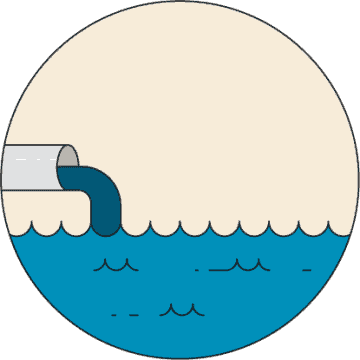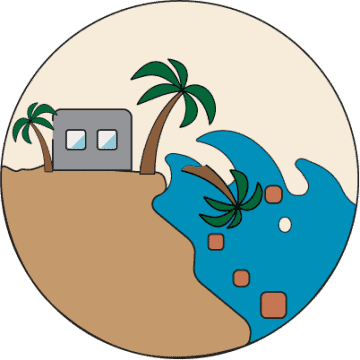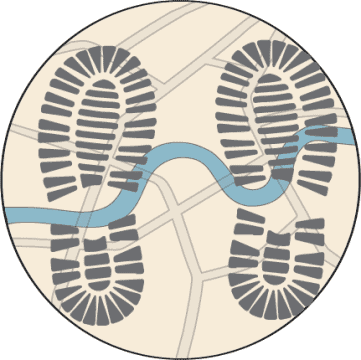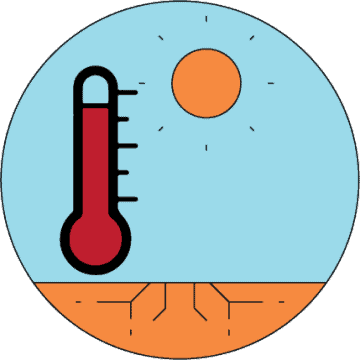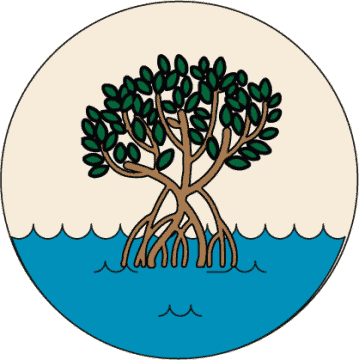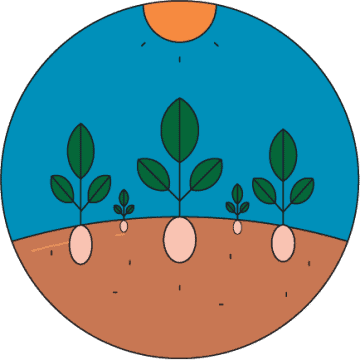“Green infrastructure is the natural or green space and bodies of water that sustain diverse species of flora and fauna; they secure the operation of ecological processes; maintain water, air, and soil resources; and contribute to the quality of life of individuals and their communities”. (Juncos Gautier, 2007, p. 10)
Green Infrastructure and the City
Extensive construction causing urban sprawl increases the environmental temperature and the amount of water that flows through the rain sewer. In open areas such as the Condado Lagoon, rainwater that is not absorbed in the ground carries sediment that reaches the bottom of the lagoon, muddies its waters, and affects aquatic life including corals.
Taking advantage of green infrastructure and its elements and natural processes can help us improve water quality, lower temperatures in urbanized environments, and protect lives and properties against climatic events. Rooted red mangroves decrease wave and wind energy during hurricane events, prevent flooding and coastal erosion. They also serve as a protective hiding place for new fish hatchlings from predators. Therefore protecting and reforesting mangroves is vital.
Green Infrastructure Pilot Project at the Estuarine Reserve of the Laguna del Condado
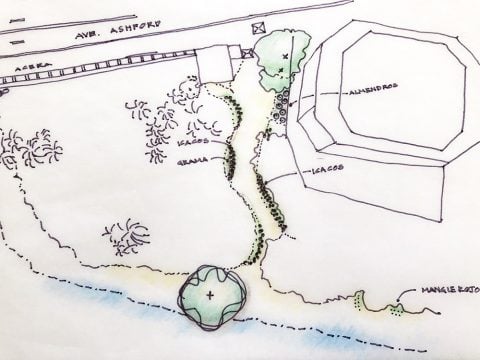
The green infrastructure pilot Project at the Laguna del Condado wants to:
- Connect red mangrove patches (Rizophora mangle) east of the northern entrance to the Lagoon (Ashford Avenue) to give them ecological continuity.
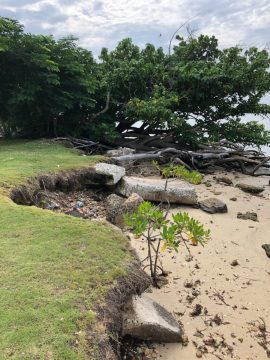
- Mitigate the erosion zone and compaction of the crosswalk from Ashford Avenue to the Lagoon since the particles generated from there form sediment at the bottom of the Lagoon which affects aquatic life.

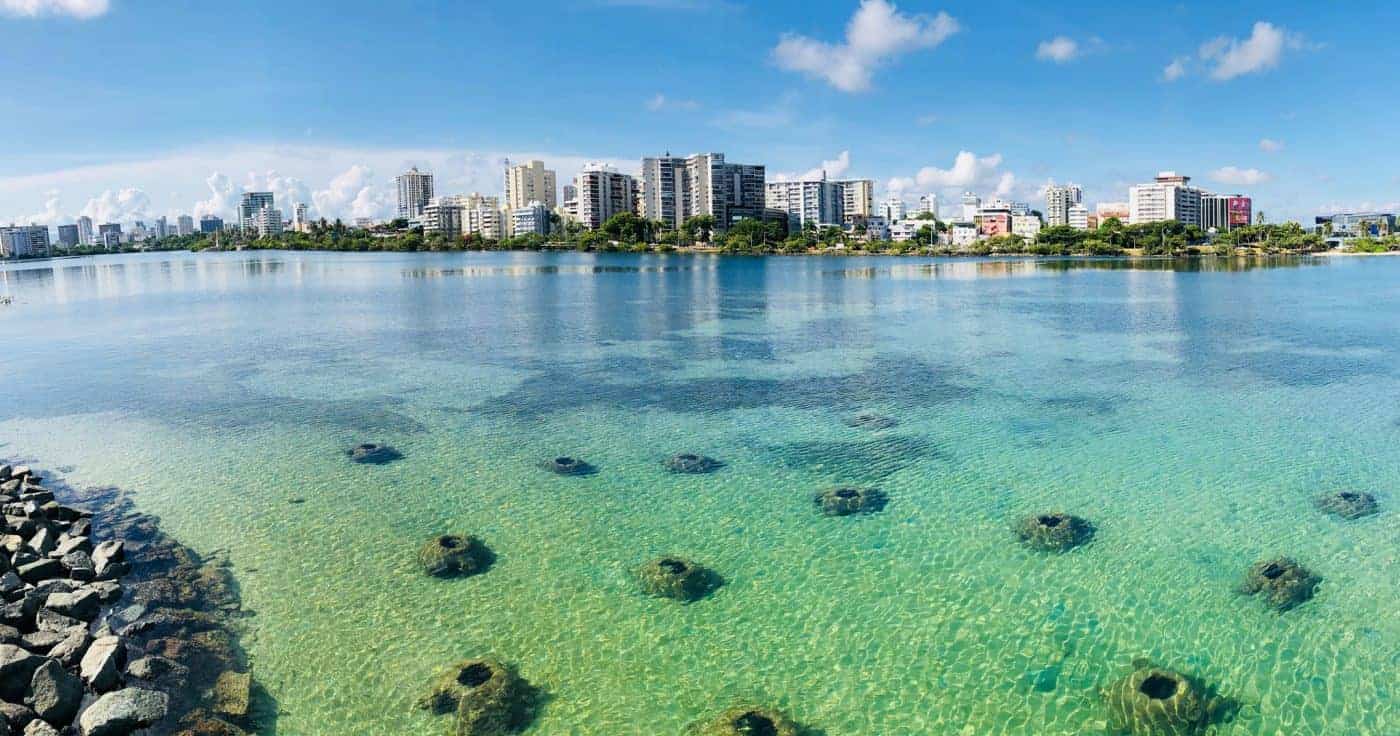
- Reforest trees and bushy species to define the area of the crosswalk with native plants like icacos (Chrysobalanus icaco), sea grapes (Coccoloba uvifera).
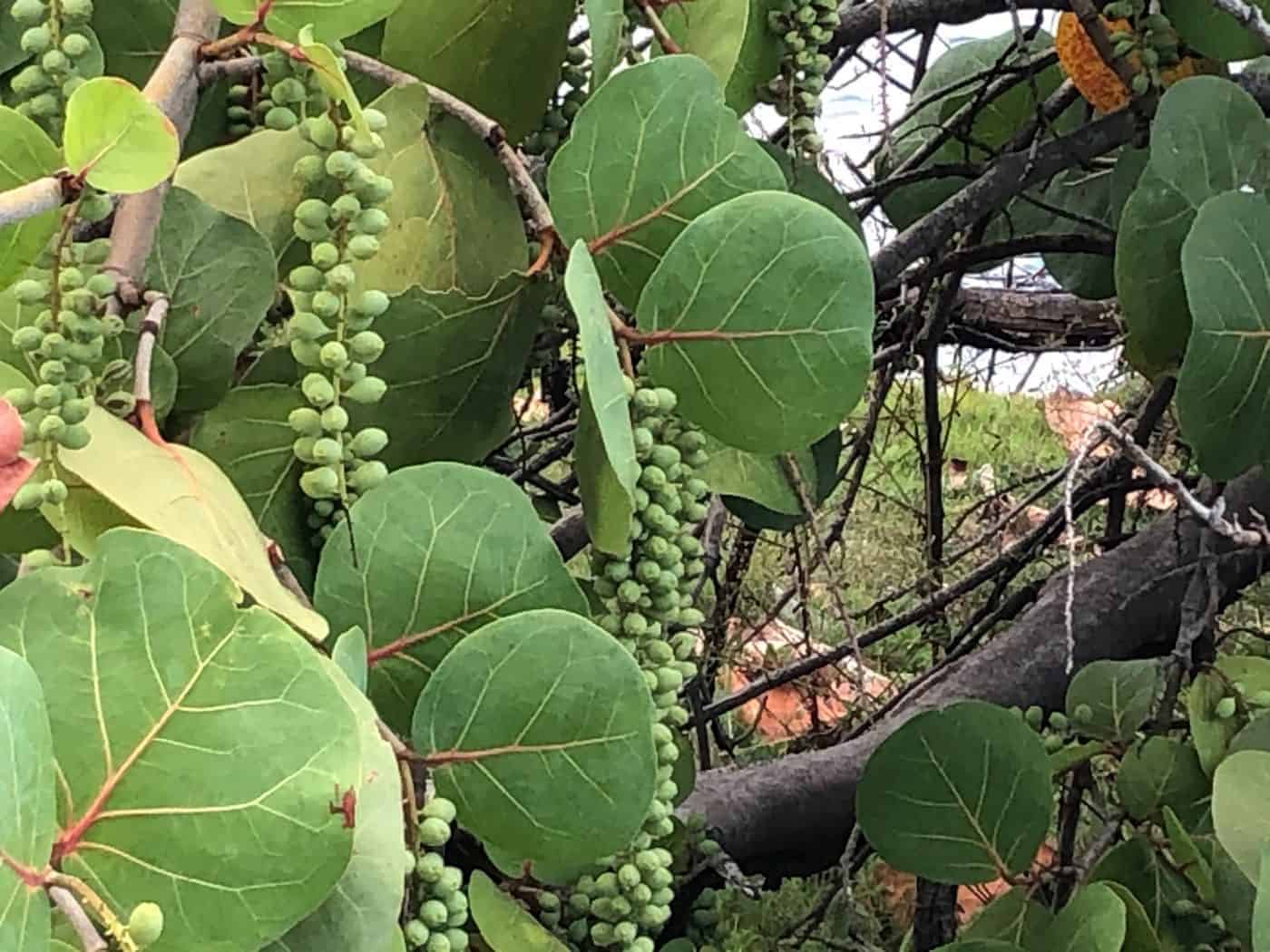
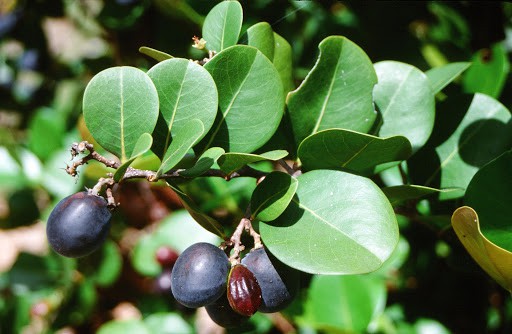
- Provide a source of food for birds and pollinators. Pollination and spontaneous regeneration of plants by fallen seeds help with the planting effort at the Lagoon.
- Strengthen vegetation and species in the Laguna del Condado Estuarine Reserve.
The most important aspect in our restoration efforts is your collaboration.
In order to continue enjoying the Laguna del Condado, it’s important that you:
- Only walk in designated areas to avoid damaging green areas and allow roots to grow.
- Keep your personal belongings out of the vegetation area in order for the plants to grow strong.
- Dump water from water bottles into plants and throw the bottle in a trash or recycling can.
- Respect bushes as homes and sources of food for wildlife and take care of the water in the lagoon and our Artificial Reef Project (learn more here).
Take Care of the Laguna del Condado Estuarine Reserve! It Belongs to All of Us!
All human activity has an impact on the estuary system. If you want to learn more about how to reduce your carbon footprint to benefit our ecosystems, join the Water Community Network (click here).
Other Projects
Development of the Green Infrastructure Plan for the Estuary Basin
This is the plan we are following for the next few years. We will implement green infrastructure projects to manage the water that overflows into the Estuario de la Bahía de San Juan basin. Through collaboration and advice from different invested constituents, we will propose projects of great impact and identify “priority zones” through the creation of interactive maps and field trips.
Urban Forest Network
The main objective of creating an Urban Forest Network is to improve the water quality and promote recreational, passive, scientific, and educational activities in the urban forests, which are an important part of the green infrastructure on the EBSJ basin. PEBSJ wants citizens to enjoy these spaces by providing educational activities in each of the forests.
Urban forests help improve the quality of the water, particularly in an urbanized hydrographic basin such as the EBSJ basin, where the ongoing development of hard and waterproof surfaces have been the norm. Urban forests also provide shelter for wildlife, refresh temperatures, catch carbon, and provide recreational opportunities.
As part of this initiative, we created a “Passport” for children that will be stamped at each urban forest they visit. We also created a digital platform, which you can access here, with detailed information about the forests, how to take care of them, and opportunities for participation in our activities.
The Urban Forest Network includes:
- Julio Enrique Monagas National Park
- Piñones State Forest
- San Patricio State Forest
- Doña Inés Park
- Luis Muñoz Rivera Park
We support these forests by sponsoring scouts who are interested in working in the forest to obtain the Eagle rank. If you are interested in learning more, click here for the list of potential or needed projects in each forest and contact information.
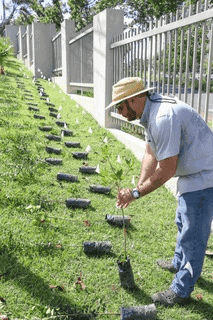
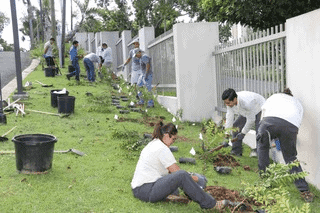
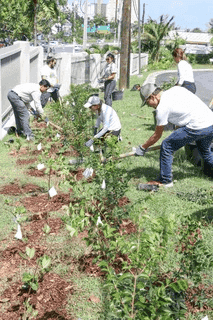
Photographer: Benny Batista
Transformation of Vacant Lots
With this project we are creating a database of vacant lots with the goal of developing them through different green infrastructure strategies. Another one of our objectives is to support organizations that want to develop vacant lots through the use of green infrastructure and civic participation.
Guide
This guide along with a series of workshops about the sustainable maintenance of green areas is a great supporting tool for green infrastructure in our cities.
Reforestation
Reforestation is the reintroduction of forest species, through sowing or planting, in land that was previously populated by forests but became bare due to felling, fires, gales, plagues, diseases, or through other destruction.
Pan-Hispanic Dictionary of Legal Terms in Spanish.
In 2017, Hurricanes Irma and María both devastated hundreds of wooded acres in Puerto Rico. In the past, Puerto Rico was deforested to allow for agriculture and urban development, but when agriculture massively decreased, the island began reforesting naturally. The same has occurred after the recent hurricanes; but we can accelerate the process by planting more trees.
Steps for a Successful Reforestation Process
- Confirm that the type of soil, temperature, and humidity are adequate for the plants and trees that will be planted.
- Plant trees and vegetation appropriate to the location.
- Select species -and location- appropriate planting techniques.
- Care for the cultivated land, especially at the beginning when more water and fertilizers are required.
- Provide ongoing maintenance.
Why are Forests Important?
- They freshen the city and improve the quality of the air, since they act as filters.
- They oxygenate the atmosphere and reduce greenhouse gasses.
- They improve the quality of the water as they filter contaminants from the overflows.
- They add aesthetic value.
- They are habitats for birds and other species.
- They reduce noise.
Benefits from our Trees
- An adult tree provides the amount of oxygen required by two people each day.
- A large tree near a house is equivalent to 10 air conditioners turned on for 20 hours a day.
- Trees transfer 100 gallons of water from the soil to the atmosphere every day, producing rain.
Reforestation Objectives of the PEBSJ
In order to restore mangrove forests that once existed in the Laguna del Condado and Bahía de San Juan, PEBSJ has developed techniques for planting mangroves that have been recognized and widely used to restore mangroves in Puerto Rico and internationally.
What Other Reforestation Efforts is the Estuary is Doing?
PEBSJ is carrying out a new coastal planting based on Spartina (salt grass) to restore and create sand dunes on the beaches.
Why Restore Mangroves?
Mangroves are natural barriers that protect us from the strong waves and swells caused by hurricanes and storms and prevent coastal erosion as their roots trap sediment. This also creates new shores. Additionally, the submerged roots of the red mangrove are the nursery of the sea; more than 80% of marine species spend their juvenile stages there, supplied with food and protection from the mangroves.
What Issues Face Restoration?
The main problems or challenges of reforestation include the maintenance of long-term crops and protection against vandalism.
Some results and benefits of protecting green areas and improving the management of overflows include:
- Improvement in the quality of the water and air at the basin.
- Development of more recreational spaces.
- Most efficient use of the land through soil infrastructure improvements to support filtration processes.
- Mitigation against flooding (supporting natural systems of flood control such as wetlands, bodies of water, and dunes).
- Control of erosion processes and sediment in the water.
- Protection and restoration of fauna and flora habitats (increase habitats for biodiversity).
- Reduction of sewage overflow.
- Reduction of energy costs, as urban trees help decrease temperatures in urban areas.
- Establish urban greenways with pedestrian access and for bicyclists.
- Reduce the heat-island effect (excessive warming in constructed areas).
- Create green roofs and attractive urban landscapes to improve the livability of the city.

